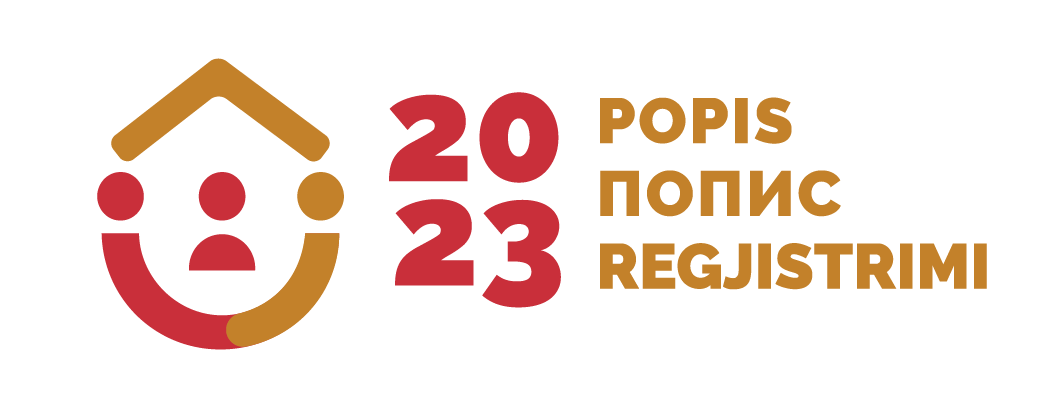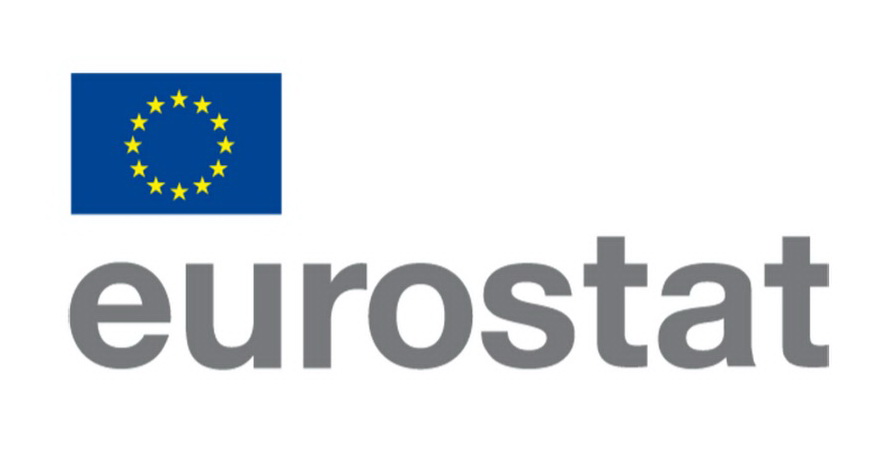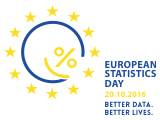| Category: |
Economic statistics |
| Area: |
Agriculture and fishing |
| Survey / data collection: |
Livestock slaughtering in slaughterhouses |
Note: For any question on metadata, please contact MONSTAT metadata support.
| 1. Contact Vrh |
| 1.1. Contact organization: |
Statistical Office of Montenegro - MONSTAT |
| 1.2. Contact organization unit: |
Department of Agricultural and Fishery Statistics |
| 1.2. Contact organization unit: |
IV Proleterske 2, 81000 Podgorica, Montenegro |
| 2. Metadata update Top |
| 2.1. Metadata last certified: | |
| 2.2. Metadata last posted: | 29 December 2023 |
| 2.3. Metadata last update: | 30. August 2022 |
| 3. Statistical presentation Top |
| 3.1. Data description: | The survey collects data on the number of slaughtered livestock by type and category, weight (gross, net, and per head), efficiency coefficient in slaughterhouses, as well as the origin of slaughtered animals. |
| 3.2. Classification system: | NACE Rev. 2 |
| 3.3. Sector coverage: | Livestock |
3.4. Statistical concepts and
definitions: | Weight of livestock (gross weight)-represents the weight of live livestock before slaughtering. The weight of the slaughtered livestock (net weight) is the weight of slaughtered livestock without the bow, head, forelegs to knees, hind legs to hocks and skins. The net weight is: meat, bones and crude fat. The randman is determined as the relationship between the weight of the slaughtered livestock net and live weight (gross). Randman is expressed in percentages with one decimal. Weight per livestock throat and weight of slaughtered cattle is expressed in kilograms in whole numbers with the exception of livestock, where the weight per head is shown in kilograms with two decimals. |
| 3.5. Statistical unit: | Agricultural enterprises-slaughterhouses. |
| 3.6. Statistical population: | Statistics of agriculture and fisheries bases this survey on the coverage of all slaughterhouses. |
| 3.7. Reference area: | Montenegro |
| 3.8. Time coverage: | Data are available from 2014. |
| 3.9. Base period: | The base period for the creation of the index is the same month of the previous year, and the previous month of the same year. |
| 4. Unit of measure Top |
| Number (the number of slaughtered livestock, the gross weight- represents the weight of live livestock before slaughter, while net weight represents the weight of slaughtered livestock). |
| 6. Institutional mandate Top |
6.1. Legal acts and other
agreements: | The Law on Official Statistics and Official Statistical System (Official Gazette of Montenegro No 18/12, 47/19) defines provisions for collection, processing, and dissemination of data. The Law provides to the Statistical Office legal powers to collect and access the data necessary for the implementation of Programme and Annual Plan. The Law gives a priority to the use of administrative data and right of access to individual data that are a result of survey of other official statistical producers. As an annex to legal provisions, Statistical Office has signed several memoranda on cooperation with administrative data providers. |
| 6.2. Data sharing: | Signed agreement on cooperation with the official statistical producers:
1. Customs Administration
2. Tax Administration
3. Ministry of Finance
4. Central Bank of Montenegro
5. Trilateral agreement (MONSTAT, Ministry of Finance, and Central Bank of Montenegro)
International institutions:
1. EUROSTAT
2. UN organizations
3. IMF
4. World Bank |
| 7. Confidentiality Top |
| 7.1. Confidentiality - policy: | Articles 53-60 of the Law on Official Statistics and Official Statistical System (Official Gazette of Montenegro No 18/12, 47/19) provide a framework for protection, use, and transmission of confidential data. MONSTAT has produced two comprehensive rulebooks that cover the procedures for individual data protection as well as keeping individual records. With purpose of the meeting legal framework on functioning of security system and statistical confidentiality there was adopted the Rulebook on Keeping Statistical Data by which Manner, Time, Technical Conditions and Organization of Statistical Data Storage to Prevent Their Destroying, Misappropriation, and Unauthorized Use is Regulated as well as the Rulebook on Contents and Manner of Keeping Records on Users of Individual Statistical Data by which contents and manner of keeping records on users of individual statistical data is regular.
Pursuant to the Article 59, an access to the confidential data is limited to persons performing duties and tasks of official statistical producer and up to the stage the data are necessary for official statistical production. Persons that performs duties and tasks within official statistical producers must sign the statement on respecting the principle of confidentiality.
Law on Official Statistics and Official Statistical System is aligned with the Regulation No 223/2009 and the Regulation (EU) 2015/759 from 29 April 2015 that also regulate confidentiality provisions.
The Government of Montenegro adopted the Statement on Commitment of Confidence in Official Statistics (Commitment of Confidence). |
7.2. Confidentiality - data
treatment: | Pursuant to Article 56 of the Law on Official Statistics and the System of Official Statistics, individual data on natural or legal persons are confidential and constitute an official secret. According to Article 57. confidential data, individual data can only be used for statistical purposes and expressed in aggregate form, in accordance with the provisions of this Law. Manufacturers of official statistics may not use the information and information collected within the activity
official statistics for the purpose of determining rights and obligations for the reporting unit to which these data and information relate. |
| 8. Release policy Top |
| 8.1. Release calendar: | The Law on Official Statistics and Official Statistical System (Official Gazette of Montenegro No 18/12, 47/19) stipulates that official statistical producers prepare, update, and publish Statistical Release Calendar. It is published on the website of Statistical Office not later than 20 December for the next year, for all official statistical producers that includes date of releasing statistical data. Any change in date of releasing in the Calendar is published in advance in accordance with the Procedure on Unplanned Revisions. |
| 8.2. Release calendar - access: | https://www.monstat.org/uploads/files/Kalendar%20objavljivanja%20za%202023%20-%20%20ENG.pdf |
| 8.3. User access: | General aim of official statistical producer is to meet the needs of users, and to make an access to statistical data to users in an understandable manner, simultaneously and under the same conditions. Statistical Office is obliged to produce and disseminate official statistics in objective, transparent and professional manner, so that all users are equally treated. |
| 10. Accessibility and clarity Top |
| 10.1. News release: | The publication containing the data on this survey is a press release Livestock slaughtering in slaughterhouses.
http://www.monstat.org/eng/page.php?id=1262&pageid=61 |
| 10.2. Publications: | Statistical Office publishes the following regular publications: 1. Statistical Yearbook, 2. Montenegro in figures, 3. Monthly statistical review. In addition to the above regular ones, Statistical Office publishes also additionally publications. Some of the most important additional publications are as it follows: 1. Women and Men in Montenegro, 2. The most often used statistical data All publication published by Statistical Office are available at the following link: http://www.monstat.org/eng/publikacije.php?id=100 |
| 10.3. Online database: | Not relevant |
| 10.4. Micro-data access: | The Law on Official Statistics and Official Statistical System (Official Gazette of Montenegro No 18/12, 47/19) regulates rules under which external users can obtain an access to individual data for needs of research. Article 58 defines types of scientific and research organizations that can obtain such data. Providing individual data without identifier is possible only upon a written request of scientific and research institutions, with purpose of performing scientific and research activities as well as international statistical organizations and statistical producers from other countries.
Research entity signs the agreement with Statistical Office, and it signs the statement on respecting the confidentiality principle.
Official statistical producers keeps a separate records on users and purpose of using the statistical data given to these users. |
| 10.5. Other: | Not relevant. |
10.6. Documentation on methodology:
domain: | Instructions on the methodology for this survey can be found on our website at the following link: http://www.monstat.org/eng/page.php?id=61&pageid=61
In the statistical yearbook can find a short methodology on the basis of which data are produced.
Data production is based on recommendations that are in line with EU Regulation 1165/2008, which regulates livestock breeding surveys. |
| 10.7. Quality documentation: | The Law on Official Statistics and the Official Statistical System ("Official Gazette of Montenegro" No. 18/12 and 47/19) defines the commitment to quality, which ensures that producers of official statistics in Montenegro work and cooperate in accordance with international principles of quality of the statistical system.
In accordance with the ESS Quality Declaration, Article 338 of the Treaty on the Functioning of the EU, Regulations 759/2015 and 223/2009 and the European Statistics Code of Practice, the following documents are adopted:
1. Quality Strategy of the Statistical Office
2. Guide for the implementation of the Quality Strategy in the Statistical Office;
3. Implementation plan |
| 11. Quality management Top |
| 11.1. Quality assurance: | Statistical Office has chosen the implementation of elements of TQM (Total Quality Management) model that foster development and improvement of functioning of:
- Institution,
- Official statistical result production, and
- Individual.
Within middle-term deadline, Statistical Office has chosen the TQM implementation through the following objectives:
1. Strong commitment to users and other interested parties,
2. Quality statistical processes and products,
3. Professional orientation of staff members,
4. Constant improvements,
5. Reduction of overburden of reporting units. |
| 11.2. Quality assesment: | One of the criteria for checking quality data is through a comparative analysis of monthly data with the same month of the previous year, as well as with the previous month, as well as with the data from administrative source (AFSVPA-Administration for Food Safety, Veterinary and Phytosanitary Affairs). |
| 12. Relevance Top |
| 12.1. User needs: | International users:
- Eurostat,
- World Bank,
- UN organizations,
- International Monetary Fund
National users:
- Ministries and other public administration bodies,
- Local government and other local government bodies.
- Central bank,
- Non-governmental organizations,
- Students,
- Researchers,
- Media. |
| 12.2. User satisfaction: | The Statistical Office has adopted the Quality Management Strategy, the Guidebook to the Implementation of the Quality Management Strategy, as well as the Plan for the Implementation of the Quality Policy.
In order to measure the degree to which fulfills obligations towards users and within the new quality policy, the Statistical Office conducted User satisfaction survey.
The results of the survey are available on the Statistical Office website, link: https://www.monstat.org/uploads/files/kvalitet/2.%20Izvjestaj%20o%20zadovoljstvu%20korisnika%20-%202022_FINAL%20engleska.pdf |
| 12.3. Completeness: | International and national requirements are met. |
| 13. Accuracy and reliability Top |
| 13.1. Overall accuracy: | Monthly survey on slaughter of livestock and livestock is conducted over the entire population, data are obtained by the reporting method, and are subject to common types of error when entering, processing errors, and non-response. |
| 13.2. Sampling error: | Not relevant. |
| 13.3. Non-sampling error: | Non-sampling errors include: error coverage, error measurement, error response and processing error. |
| 14. Timeliness and punctuality Top |
| 14.1. Timeliness: | The time period between the availability of data and publication is 45 days. |
| 14.2. Punctuality: | In accordance with the Annual Plan of Official Statistics and the Statistical Release Calendar, it is planned to publish the survey data on the 15th of month. |
15.3. Coherence - cross
domain: | This survey is compliant with the Regulation (EC) No 1165/2008. |
| 15.4. Coherence - internal: | Internally coherent. |
| 17. Data revision Top |
| 17.1. Data revision - policy: | Statistical Office has adopted the revision policy and it is available on the website.
http://www.monstat.org/eng/page.php?id=1411&pageid=1411 |
| 17.2. Data revision - practice: | Not relevant. |
| 18. Statistical processing Top |
| 18.1. Source data: | The data from this survey are the source for the production of gross domestic meat production data. |
18.2. Frequency of data
collection: | The collection period is monthly. |
| 18.3. Data collection: | Data from slaughterhouses are collected by the reporting (postal) method. The production data is filled out by an authorized person and verified by the responsible person of the company with the seal of the company. After that, the completed survey forms for the company are submitted to the Statistical Office. |
| 18.6. Adjustment: | Not relevant. |







